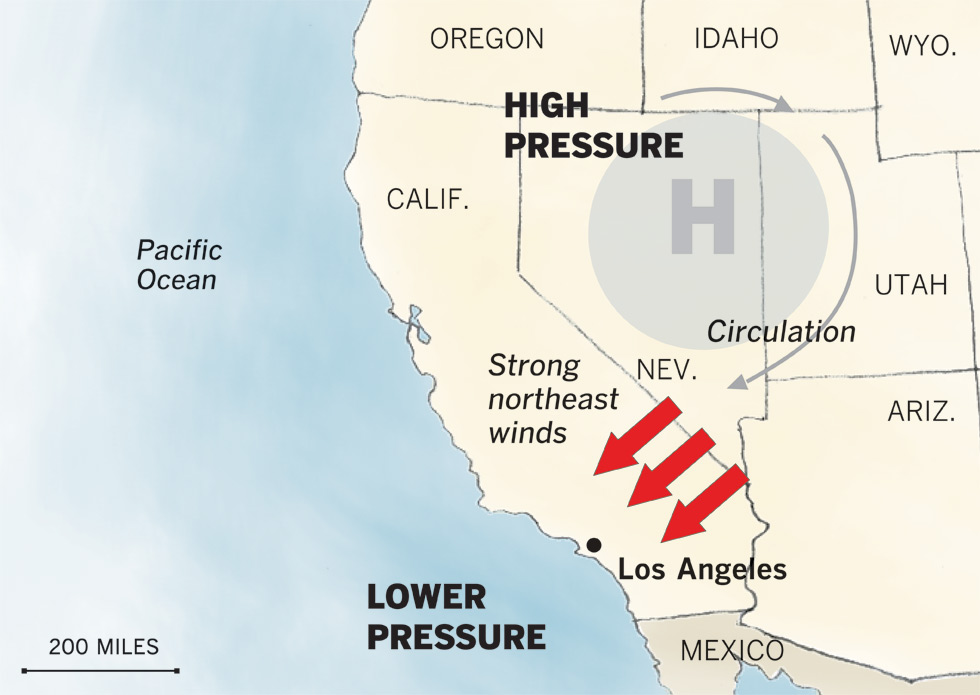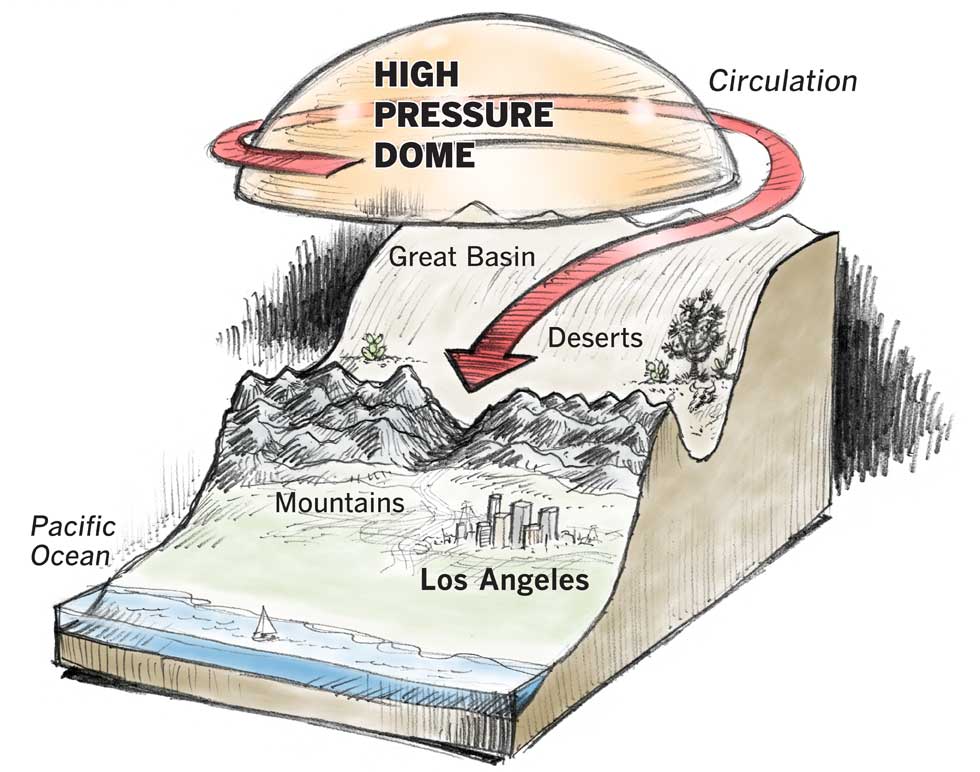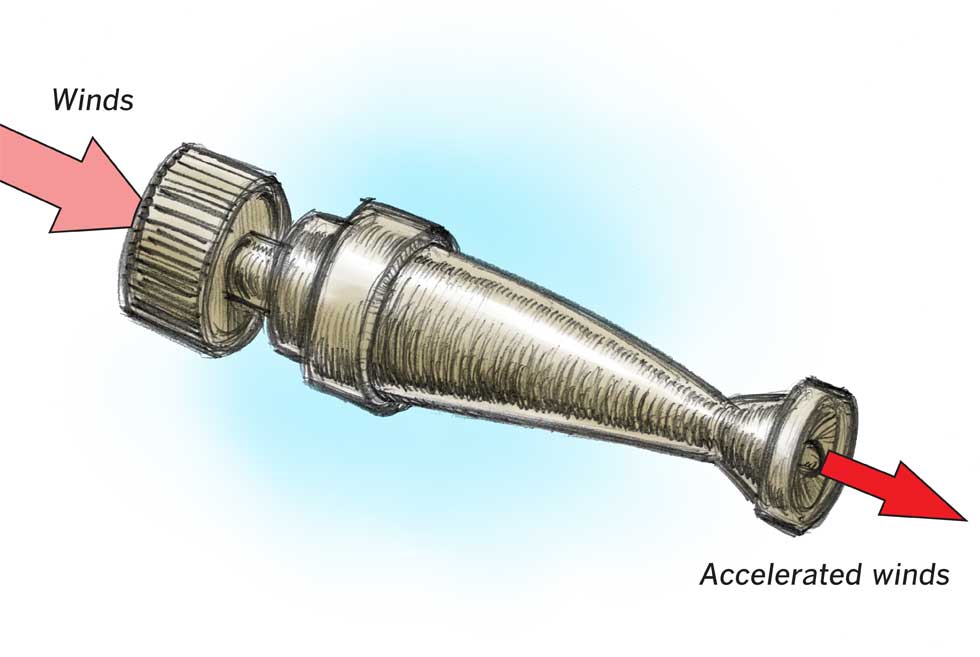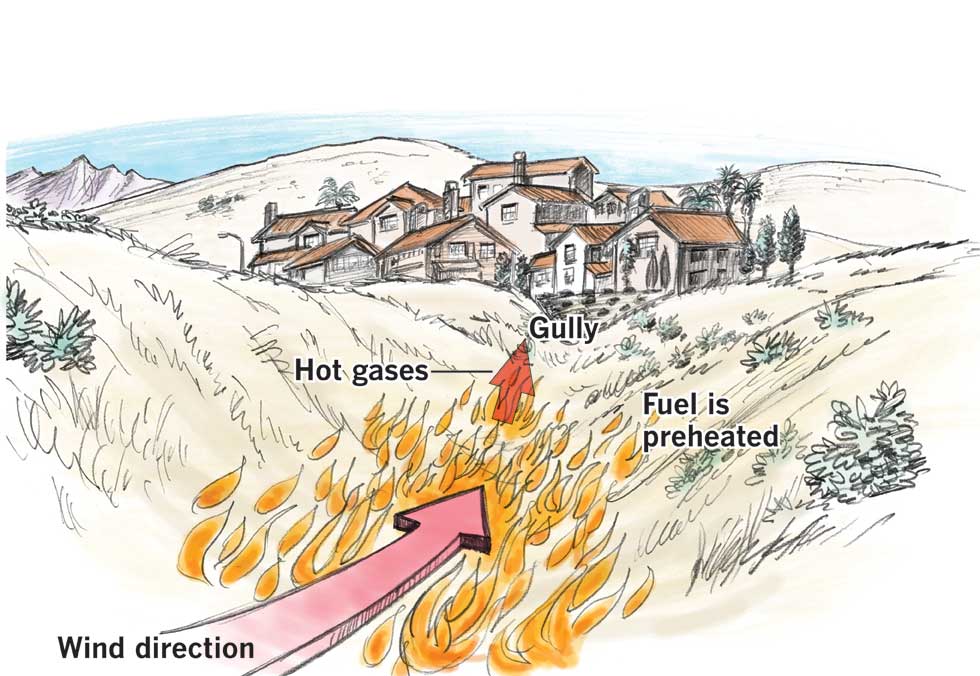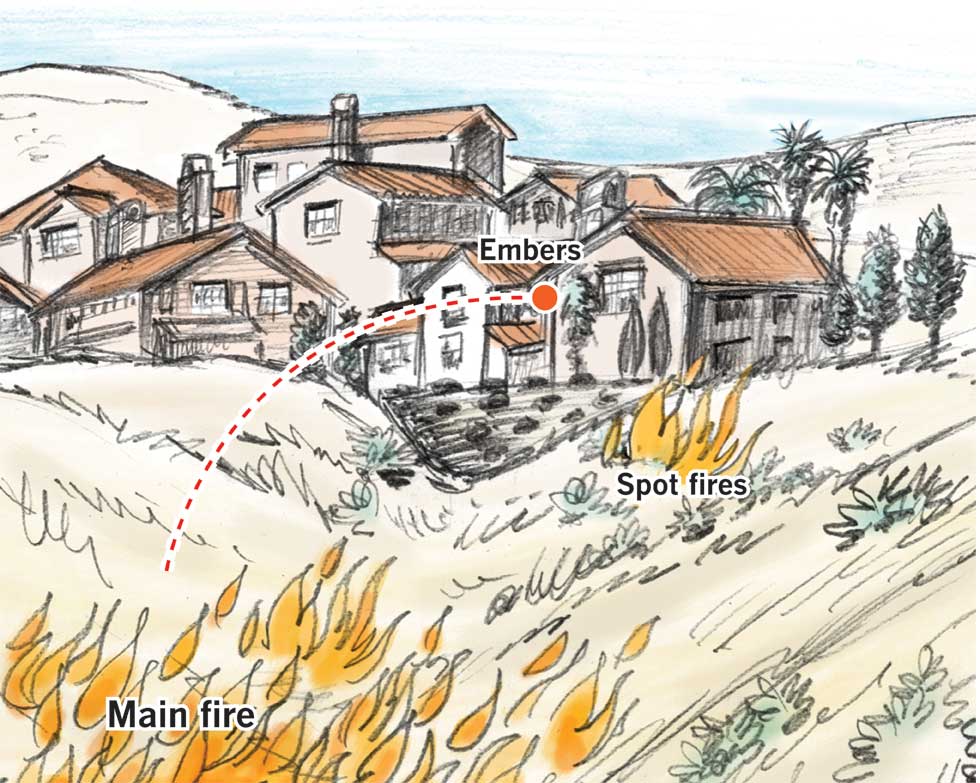Interactive graphic
Santa Ana winds and wildfires
Santa Anas are strong, dry offshore winds typically caused by high pressure flowing downslope to lower pressure, usually off the coast. The hot, gusty winds can not only fan the flames once a wildfire starts, they dry out brush, providing abundant fuel.
High to low pressure
Pressure dome
Venturi effect
Terrain's role
Spreading the fire
 BACK
BACK
|
NEXT

(1/ )
The difference between high pressure inland and lower pressure at the coast — the pressure gradient — causes winds to intensify.
Air from high pressure flows like a river down to lower elevations of Southern California. The sinking air heats up, loses moisture and speeds up, especially as it squeezes through canyons.
Mountain ranges block the winds in some places, but the winds seek out openings much like water would. The result is a Venturi effect, with velocities increasing as winds are funneled through passes and canyons. The same thing happens when water is forced through the nozzle on a garden hose.
In addition to accelerating winds, terrain plays a role in a wildfire's advance. On hillsides with gullies or ravines, a chimney effect can cause wildfires to burn uphill more rapidly. Gullies or ravines form channels for hot gases to rise. The fire creates a draft, pulling oxygen into itself, and blazes roar up rapidly as if in a chimney.
Winds may carry hot embers far from the original fire. They can touch off smaller fires ahead of or behind a main fire, and these may grow into new wildfires.
 BACK
BACK


